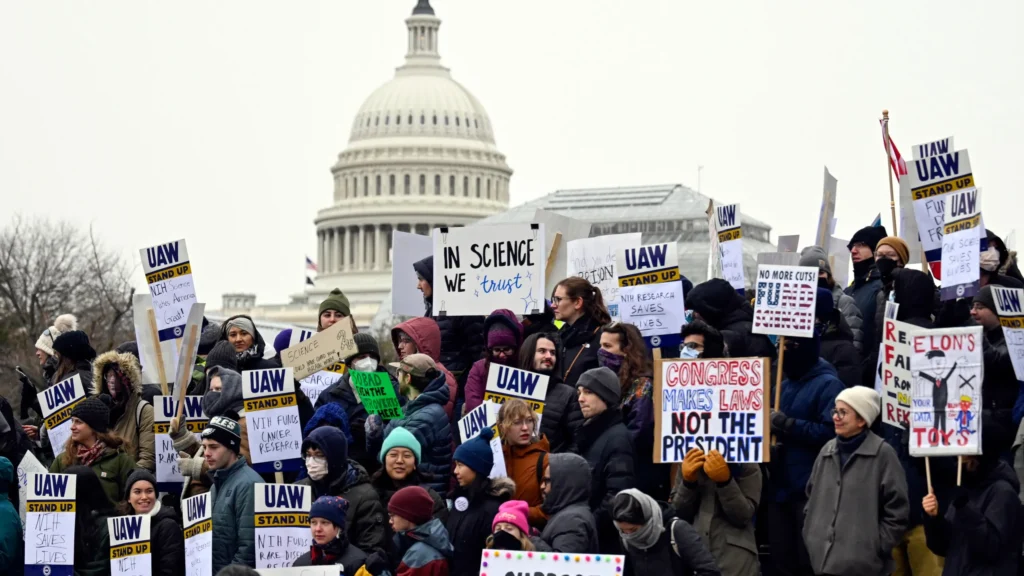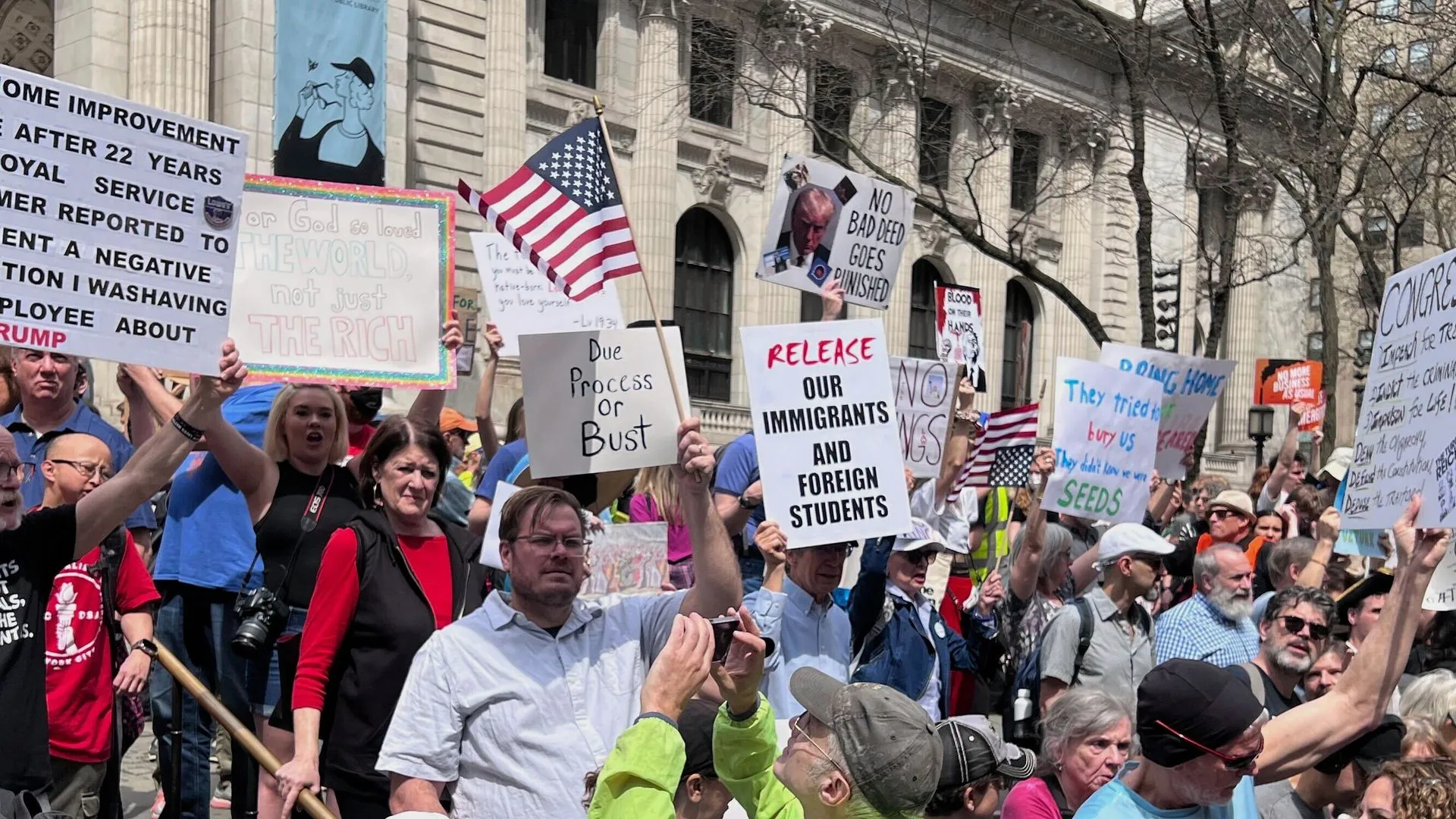Across cities from Seattle to Savannah, a new protest wave dubbed “50501” is sweeping the United States. Named after the date it began, the movement has rapidly grown into one of the largest grassroots uprisings in recent years, driven by economic hardship, inflationary pressure, and growing anger over trade tariffs imposed on key imports.
What started out as a May Day protest with a labor focus has now grown into a larger public uproar. Protesters from multiple demographics — union workers, small business owners, students, farmers, and middle-class families — have unified under the “50501” banner. Their rallying cry: “We’re paying the price.”
📉 The Spark: Tariff Shockwaves Hit Main Street
The protests come in response to the U.S. government’s latest escalation in the global trade war, particularly with China and the European Union. New tariffs, announced in March 2025, targeted critical goods such as electronics, car parts, textiles, and agricultural imports.
Within weeks, prices on essential consumer goods surged, with retail chains passing costs directly to shoppers. For example:
- Electronics became 20–35% more expensive.
- Imported food staples (like rice, cheese, and fruits) rose sharply.
- Automobile repairs jumped in price due to higher-cost parts.
By late April, inflation had spiked 1.2% in a single month — the highest short-term leap since early 2022. Household budgets, already tight from post-pandemic recovery and interest rate uncertainty, buckled under the weight.
⚙️ Economic Discontent Meets Political Distrust
While the Biden administration had implemented tariffs in 2021–2022 with a focus on national manufacturing growth, the current return under Trump’s second term marks a more aggressive and widespread approach.
Critics argue the tariffs serve political ends more than economic ones. Protesters cite:
- No meaningful rise in domestic manufacturing to justify the price hikes.
- Small business closures due to inaccessible materials or higher import costs.
- A lack of wage increases to balance the rising cost of living.
Many feel caught in a policy crossfire — with economic pain landing hardest on those who can least afford it.

🔥 From Online to the Streets: How 50501 Grew
What makes 50501 unique is its leaderless, decentralized model. The name originated from a Reddit thread posted by a Texas-based truck mechanic who listed out everything he could no longer afford due to inflation: phone repairs, baby formula, and car maintenance.
The post ended with, “May 1, we rage.” That line became a viral hashtag: #50501Rage.
By the day itself, tens of thousands gathered in public squares across 30 states. Within days, the movement had spawned:
- Mass walkouts in manufacturing plants and warehouses
- Student strikes on college campuses
- Flash protests outside state capitols and corporate HQs
- Digital boycotts against brands seen as exploiting tariff windfalls
🧑🌾 Unlikely Alliances: Farmers, Coders, and Cashiers Unite
Unlike previous single-issue protests, 50501 spans occupations, regions, and ideologies. Farmers in Iowa march alongside software engineers in Austin. Fast-food workers stand shoulder to shoulder with educators.
This unusual coalition finds common ground in shared pain: a sense of being economically overburdened and politically overlooked.
Many protest signs reflect everyday grievances:
- “Tariffs took my job.”
- “We grow it here. Why can’t we afford it?”
- “This isn’t strength — it’s sabotage.”
👮 Protests Turn Tense in Several Cities
While most 50501 protests have remained peaceful, tensions have flared in key metro areas like Chicago, Atlanta, and Portland. In Los Angeles, a protest outside a federal trade office turned chaotic when demonstrators clashed with riot police after security forces blocked media from filming.
Over 300 arrests have been made nationwide, largely on charges of unlawful assembly or blocking roads. However, civil rights advocates warn that law enforcement responses may escalate the movement further.
🧠 The Psychological Impact: National Mood at a Low Point
Mental health experts warn that the economic strain behind 50501 is triggering widespread anxiety, depression, and burnout — particularly among young adults and working parents.
Surveys conducted in June 2025 showed:
- 62% of Americans feel “deeply stressed” about economic uncertainty.
- Because of inflation and student loan debt, one in three Gen Z workers worry they will never be able to buy a home.
- Trust in government has fallen to a 10-year low.
🎤 Voices from the Ground
“This isn’t just about trade. It’s about survival,” says Marlene D., a grocery cashier from Detroit. “Every time a politician signs a tariff, I lose $30 from my paycheck to groceries.”
“I voted for these policies, thinking they’d bring jobs back,” admits Chad R., a mechanic from Alabama. “Now I can’t afford the tools I need.”
🗳️ Political Fallout Begins
As November’s midterms approach, candidates from both parties are recalibrating their platforms in light of 50501’s momentum. Democrats seek to frame tariffs as a Republican overreach, while some Republicans claim media manipulation is fueling unrest.
Centrist independents, however, are gaining traction with messages about economic balance, tariff reform, and consumer protection.
🔮 What’s Next for 50501?
As the summer continues, organizers expect the movement to grow — especially with college campuses reopening, and more job losses expected in sectors exposed to global supply chains.
Analysts warn of possible escalation if:
- Energy prices rise again in August
- Student loan payments resume in full
- Wages fail to keep pace with inflation
Some fear 50501 could evolve into a long-term economic justice campaign akin to Occupy Wall Street — or, conversely, burn out under political pressure.
FAQs: 50501 ‘Rage’ Protests & U.S. Tariff Fallout – 2025
1. What does “50501” stand for?
“50501” refers to May 1, 2025, the day the nationwide protests began. It has since become a symbolic name for the economic justice movement protesting tariff-related inflation and government trade policy.
2. What are the key demands of 50501 protesters?
While decentralized, most protesters call for:
- Immediate rollback of recent tariffs
- Price stabilization measures for essential goods
- Support for small businesses and farmers hurt by import restrictions
- Transparency in trade negotiations
- Living wages and inflation-matched benefits
3. Who is leading the movement?
50501 has no single leader or organization. It operates as a decentralized, grassroots network, mostly coordinated via social media platforms like Reddit, Instagram, and Discord.
4. Which cities are most affected?
Major protests have occurred in Los Angeles, New York, Chicago, Atlanta, Portland, Austin, and Philadelphia, though smaller cities and rural towns have also seen walkouts and marches.
5. Are the protests violent?
The vast majority are peaceful. However, some cities have experienced isolated clashes with police, particularly where protest zones overlapped with federal property or were deemed “unauthorized gatherings.”




